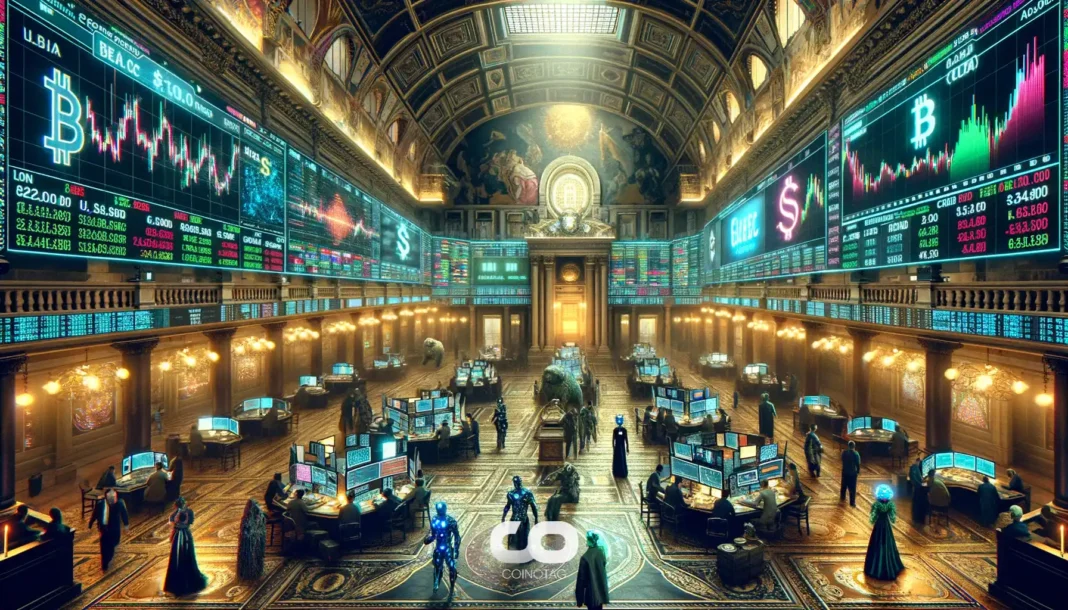- The emergence of tokenization in the cryptocurrency space is reshaping traditional financial securities.
- Despite the ideal of a decentralized world, intermediaries remain vital in ensuring operational stability.
- “It’s not about eliminating intermediaries, but rather about redefining their roles in the evolving landscape.”
This article explores the evolving role of intermediaries in the tokenization of real-world assets within the cryptocurrency ecosystem.
The Persistence of Intermediaries in a Decentralized World
In the ever-evolving landscape of cryptocurrency and digital assets, the idea of decentralization often leads to optimism about the removal of intermediaries. However, reality suggests otherwise. As various digital currencies like Bitcoin and Ethereum have gained momentum, the role of intermediaries, though less prominent, has not entirely dissipated. These entities, whether they are traditional banks or new blockchain-based platforms, still play a crucial part in navigating the complexities of the crypto ecosystem.
The Role of Central Securities Depositories (CSDs)
With the growing trend towards the tokenization of real-world assets, we see CSDs becoming central players rather than fading into obscurity. Regulatory sandbox regimes are gaining traction, indicating that while Distributed Ledger Technology (DLT) attempts to disrupt traditional financial systems, it also reaffirms the necessity for CSDs. Contrary to concerns surrounding erasure of traditional roles, these financial institutions are evolving to facilitate this new age of asset representation without completely losing their foundational role.
Tokenization: A New Approach to Financial Transactions
Tokenization strategies are being scrutinized, with some critics dubbing them as superficial attempts to implement blockchain technology. This stems from the fact that many tokens are not fundamentally created on a blockchain but are proxied versions of assets managed by traditional intermediaries. While this seems counterintuitive to the vision of pure decentralization, it signifies a transitional phase where engagement with DLT can occur without fully abandoning existing structures. By generating new representations of assets, the industry can begin to blend traditional financial systems with innovations in blockchain.
Regulatory Perspectives on Redundancy
Many stakeholders raise concerns over the redundancy of internal ledgers at CSDs, especially when contrasted with blockchain’s immutable reputation. However, regulators appear comfortable maintaining this duplication, prioritizing stability and risk management over optimal efficiency. This highlights a significant reality: the adoption of innovative technology in finance often occurs within familiar regulatory frameworks, suggesting that compliance and oversight remain paramount to the successful integration of digital assets.
The Future Outlook on Asset Management
Major asset management firms are at the forefront of exploring tokenization’s potential, even as they confront challenges surrounding blockchain technology, such as scalability and interoperability. The focus is less on eliminating the intermediary entirely, but rather refining how these roles can better serve both traditional finance and innovative digital assets alike. Despite existing limitations, early adopters have begun to illustrate how asset mobility and collateral management can unlock considerable efficiencies, laying the groundwork for a more integrated approach to finance.
Conclusion
The landscape of cryptocurrency and financial technology is complex, and while the desire for a decentralization-driven economy persists, a middle ground is necessary. A future where intermediaries are redefined while leveraging their expertise with emerging technology would be most beneficial. The transitional role of blockchain in financial markets indicates we are moving towards a more nuanced approach that combines the best of both worlds, thus paving the way for a more efficient and inclusive financial system.






